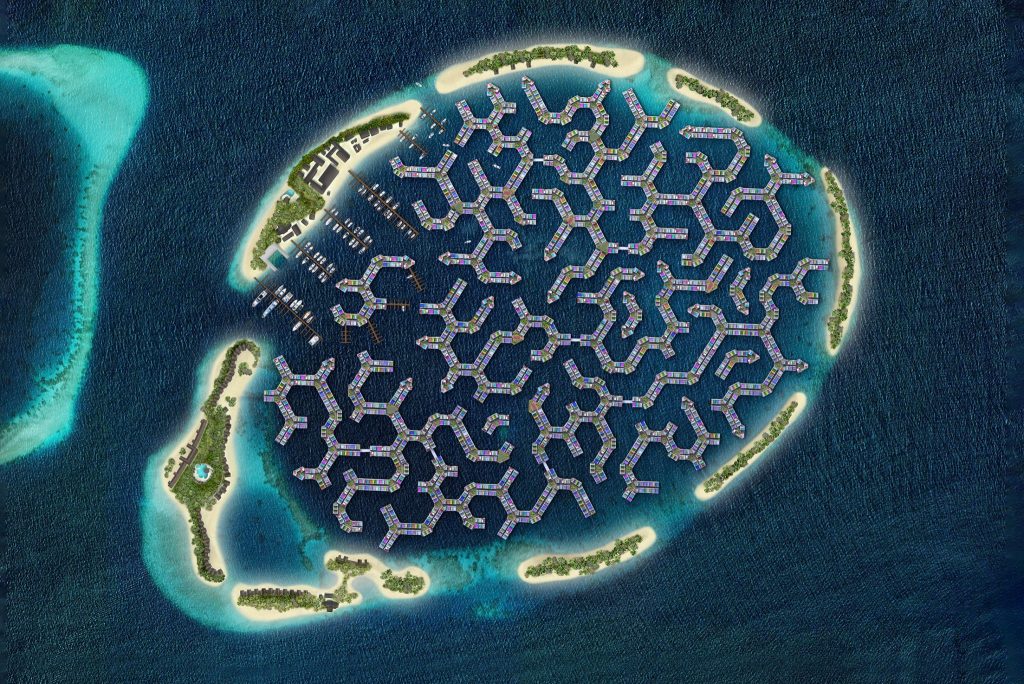Maldives could become uninhabitable by 2100
(Sustainabilityenvironment.com) – Also the Maldives will have their first floating city able to adapt to the rising seas. Called Maldives Floating City, it is the first floating settlement to gain the full support of the local government. The master plan was entrusted to the architects of Waterstudio in collaboration with Dutch Docklands. The development will accommodate up to 20 thousand people in 5,000 houseboats placed within an archipelago of about 200 hectares, less than 10 minutes by boat from the capital Malè.
The problem of rising seas is already affecting the archipelago of the Indian Ocean, where over 80% of the population is living a few meters from the sea.
The inspiration from the “Brain Coral”
According to the latest scientific research, the Maldives will be completely uninhabitable by 2100, disappearing below sea level. The Maldives Floating City project aims to be the first experiment to ensure the survival of this wonderful location.
The inspiration of the Waterstudio team comes from the brain coral, a particular type of local coral that assembles a series of hexagonal islands interconnected by channels.
Read also New super desalination plant against thirst for Neom smart city
The development will be highly sustainable and will involve the creation of artificial banks in the underwater foundations of the city, to encourage the growth of corals. Clean energy and public services should be available to all, providing the floating city with a shared smart grid. The same attention will be devoted to waste management interpreted as the “metabolism” of the city to minimize environmental impact. Also, the distances between one module and the other are defined in detail, in order to avoid to obscure excessively the seabed causing damage to the local biodiversity.
Obviously, the tourist aspect has not been neglected in the project of the floating city that will also provide a hotel, as well as a hospital, schools and public offices. Each residence will be about 100 square meters with a roof terrace and will cost around 250 thousand dollars.
The first urban agglomerations should be completed by 2024 to reach full completion of the city by 2027.

